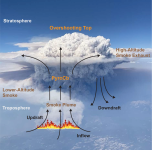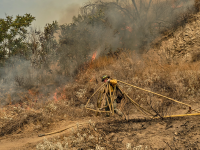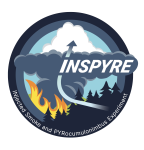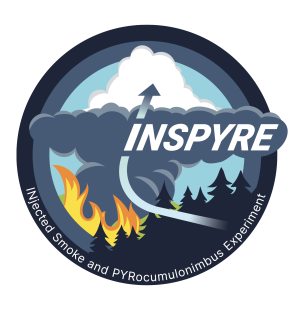INjected Smoke and PYRocumulonimbus Experiment
The INjected Smoke and PYRocumulonimbus Experiment (INSPYRE) Science Team will constrain the role of pyrocumulonimbus (pyroCb) in the earth system and characterize their physical links to extreme wildfire behavior.
INSPYRE will test the hypothesis that:
Increasing wildfire size and intensity will amplify pyroCb-driven smoke injection into the stratosphere and induce measurable changes to Earth’s radiative balance.
To test this hypothesis, we will employ NASA’s ER-2 and NSF/NCAR's GV airborne platforms, along with ground-based platforms to obtain the remotely sensed and in situ measurements required to quantify the processes leading to pyroCb development, the downstream consequences of pyroCb-injected smoke on the upper troposphere and lower stratosphere (UTLS), and feedbacks between pyroCbs and extreme fire behavior. Observations will span the full spectrum of wildfire and pyroconvective activity, ranging from precursor pyrocumulus (pyroCu) to large pyroCbs that inject smoke directly into the stratosphere. The ER-2 payload will include remote sensing instrumentation, while the GV payload will prioritize in situ and radiation instrumentation, with a subset of remote sensing measurements. Ground-based sampling will include scanning active remote sensors and other in-situ measurements.
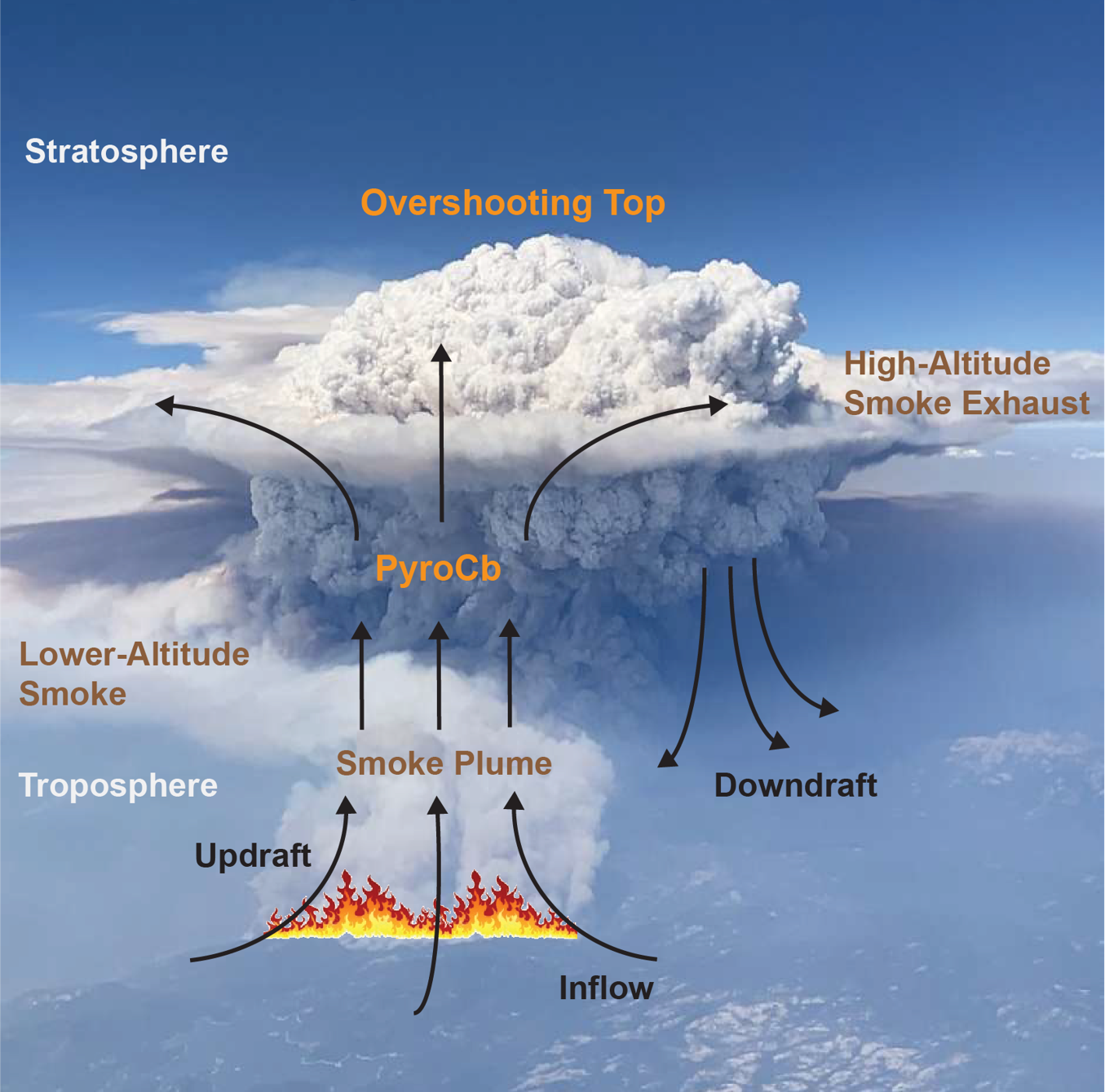
By combining these measurements with satellite observations and modeling, INSPYRE will address three science questions that establish links and feedbacks between the physical processes enabling pyroCb initiation, smoke injection into the UTLS, and downstream consequences:
1. Which fires produce pyroCbs and why?
2. What mechanisms determine whether a pyroCb will inject smoke directly into the stratosphere, and what will be the magnitude of the ensuing plume?
3. How do pyroCb-injected smoke plumes modify UTLS composition and radiation budget?
Background
PyroCbs are a poorly understood and inadequately-predicted severe weather phenomenon driven by large and intense fires and unique meteorological conditions. These fire-generated clouds are linked to extreme fire behavior that impedes firefighting efforts and can devastate communities. PyroCbs can also inject volcanic-scale smoke plumes into the stratosphere that encircle the globe, reside for more than a year, alter stratospheric circulations, extend the lifetime and size of the Antarctic ozone hole, and affect Earth’s radiative balance. Given the ongoing and projected increases in fire activity and severity, there is an urgent need to better understand and predict global and fire-scale impacts from pyroCb activity.
The sustained measurements and associated modeling that INSPYRE will provide are critically needed for:
- Understanding plume dynamics linked to high-intensity fire behavior and pyroCb development;
- Quantifying the impact of pyroCb smoke on regional and global-scale radiative forcing;
- Including pyroCb dynamics and ensuing smoke plumes in current Earth System Models;
- Improving fire and pyroCb monitoring from space; and
- Advancing forecasts of pyroCb development for fire managers and community safety.
Research Team
Principal Investigator: David Peterson - U.S. Naval Research Laboratory.
Deputy Principal Investigator: Neil P. Lareau - University of Nevada, Reno.
Deputy Principal Investigator: Olga Kalashnikova - NASA Jet Propulsion Laboratory
EVS-4 Program Executive: Mihailo Derek Rutovic - NASA Headquarters
Program Scientist: - Will McCarty - NASA Headquarters
Deputy Program Scientist: - Kenneth Jucks - NASA Headquarters
EVS-4 Mission Manager: Jennifer Olson - NASA Langley Research Center
Investigation Manager: Vidal Salazar - NASA Ames Research Center

